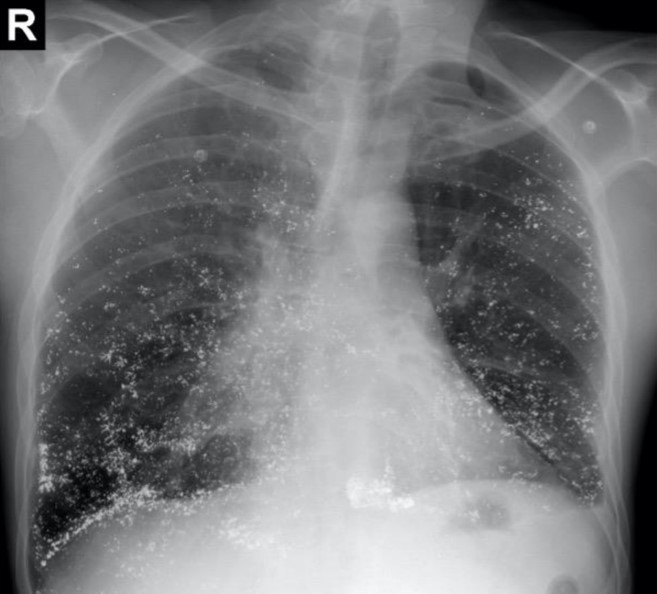An unexpected case of acute respiratory distress – acute elemental mercury poisoning
Image Description
Elemental mercury (Hg°) or metallic mercury is a liquid silver metal used in both industrial and agricultural fields, but it is also frequently part of folk rituals. Accidental or voluntary Hg° exposure is associated with acute severe respiratory distress and chronic neurologic sequelae(1). A 42-year-old male patient presented to the Emergency Department with dyspnea, fever, and chest pain. Cardiological investigation (electrocardiography, cardiac ultrasound, enzyme levels) had no remarkable modifications. However, chest X-ray identified numerous metallic hyperdensities throughout the lungs. The patient’s family inquiry revealed that the patient self-injected mercury of unknown origin for the purpose of aphrodisiac effects. Blood mercury level on admission was 835 µg/L (reference value < 1µg/L), markedly higher than the reported lethal dose. 24-hour urine mercury level was 200 µg/L. Beside administering supportive treatment, bronchodilators and high-flow nasal oxygen, chelation treatment was promptly initiated with 250 mg 2,3-dimercaptopropane-1-sulfonate (DMPS) every 6 hours for five days. Subsequently, urine Hg° level increased to 2450 µg/L, indicating successful chelation therapy. Repeated radiograph of the thorax had unchanged features compared to the initial one. This aspect is typically taking into account the slow toxicokinetics of elemental mercury. Considering the favourable clinical evolution, the patient was discharged, and chelation treatment was further continued with oral DMPS 500 mg daily.
References
Da Broi U, Moreschi C, Colatutto A, Marcon B, Zago S. Medico legal aspects of self-injection of metallic mercury in cases of suicide or self-harming. J Forensic Leg Med. 2017;50:12–9.


